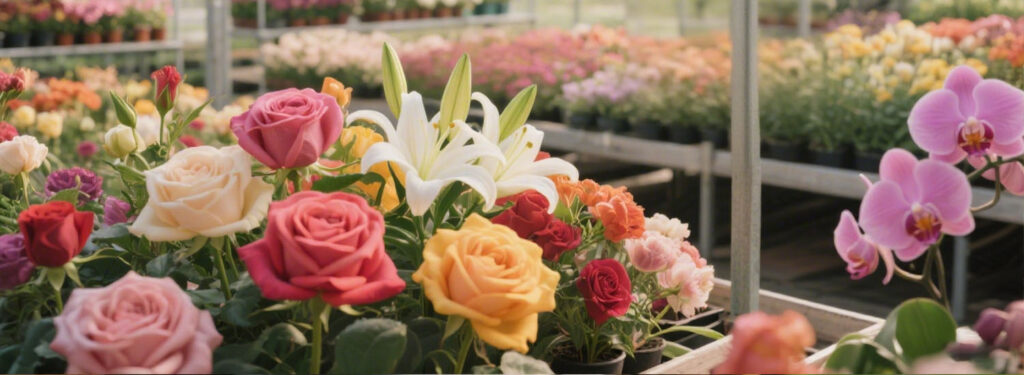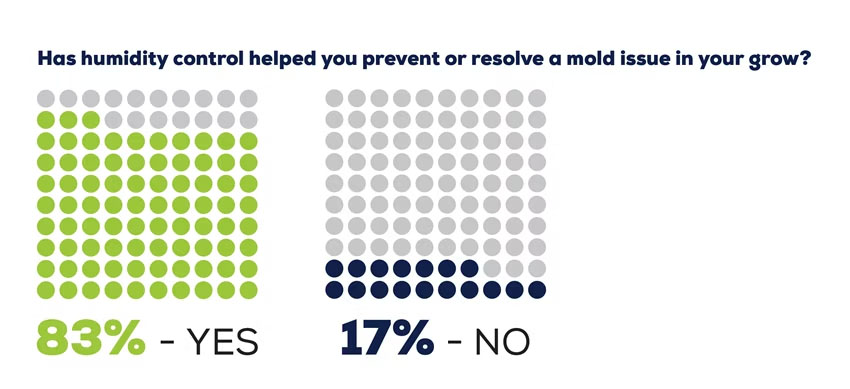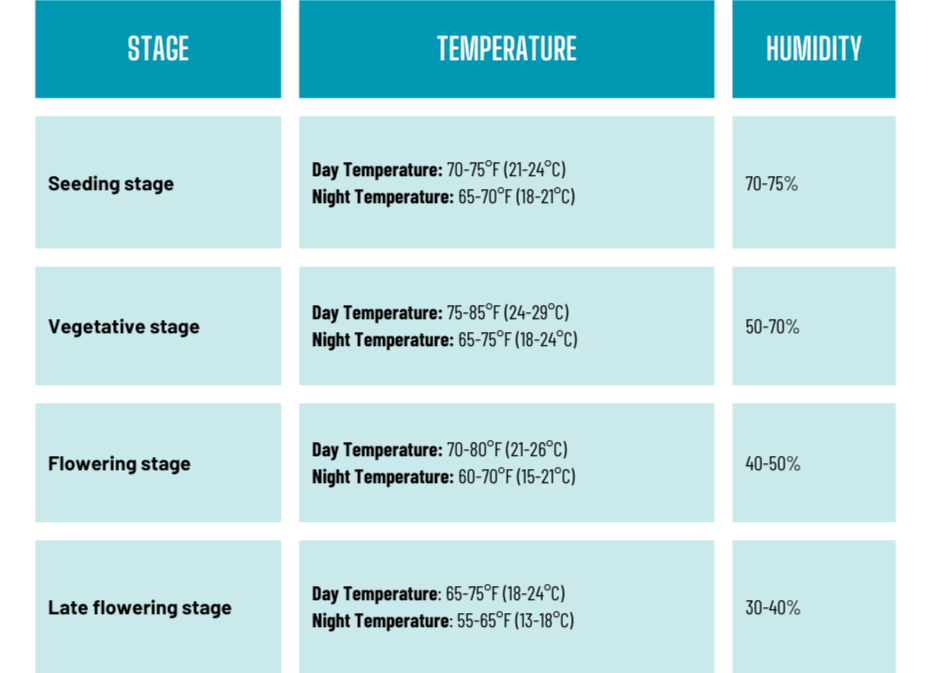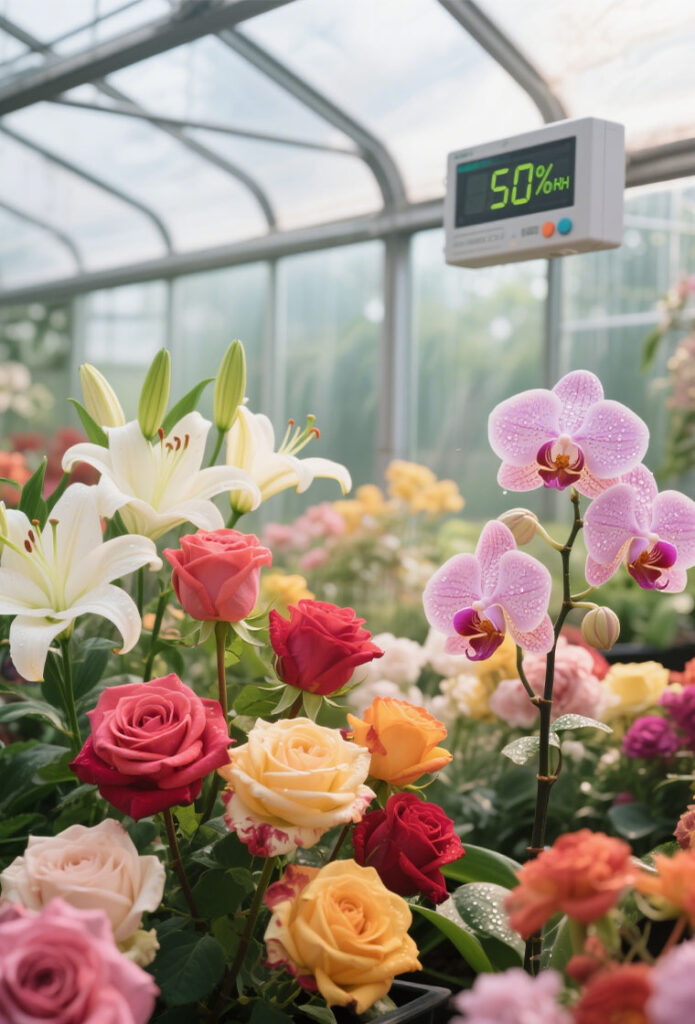
Precise Humidity Control—A Critical Step in Maintaining Flower Quality
When growing ornamental flowers, one factor that consistently stands out as a make-or-break factor in maintaining quality is humidity. Humidity levels during the flowering stage can mean the difference between radiant blooms and costly losses.
Excess moisture creates a welcoming environment for fungal invaders, which can lead to unsightly petal spots. On the other hand, air that is too dry accelerates water loss, resulting in wilting and browning of the edges.
This is why precise humidity control is important to protect both the appearance and commercial value of the flowers. In this guide, we’ll explore why humidity matters for flowers and the common humidity-related challenges. We’ll also discover how dehumidification equipment integrated with temperature control systems can help prevent these issues.

Key Takeaways
- Impact of humidity on flowers: Both excessive and insufficient humidity can harm flowers and cause fungal growth, premature wilting, and bud rot.
- Seasonal changes require precise humidity management: High summer Relative Humidity (RH) promotes mold, while low winter humidity increases transpiration, which leads to premature wilting.
Smart dehumidifiers as a solution: Coairo whole-house dehumidifiers can improve and manage humidity levels within large spaces. Their multi-function LCD controller, automatic defrosting, and fresh air function protect flowers from humidity-related problems and extend their blooming period.
Why Humidity Matters for Flowers
Humidity directly impacts the major physiological processes, such as photosynthesis and transpiration. Without the optimal functioning of these processes, plants cannot thrive.
During the flowering stage, petals are at their most delicate. Prolonged high humidity can cause a thin film of moisture to accumulate on the surfaces. Diseases such as gray mold (Botrytis cinerea) and powdery mildew spread quickly in this environment and leave spots that are difficult to reverse.
Conversely, air that is too dry is equally problematic for the plants. It speeds up transpiration and causes flowers to lose water faster than they can replace it. The result is petal browning, shortened flower life, and premature wilting.
Common Issues Encountered When Growing Ornamental Plants
Alt Text: Humidity control prevents mold issues
Source: Cannabis Business Times
Understanding exactly how humidity interacts with the plant’s microclimate is the first step towards healthy plants. Here are some of the most common issues you might face during flowering:
1. Mold Spots
Gray mold, caused by Botrytis cinerea, is a leading humidity-driven problem in ornamental plants. It appears on cannabis buds about four weeks into flowering, or on other ornamental flowers, as brown, water-soaked spots. Powdery mildew is another common issue, affecting plant leaves and leaving behind gray-white blotches.
These outbreaks are linked to prolonged, fluctuating moisture on leaves or petals rather than short-lived high-RH spikes. Research shows that a canopy relative humidity above 93%, combined with 8–12 hours of continuous plant tissue wetness, creates ideal conditions for infection.

Alt Text: Humidity control prevents mold issues
Source: Cannabis Business Times
2. Premature Wilting
High humidity may encourage mold, but low humidity brings its own set of challenges. Excessively dry air increases the transpiration rate, which makes the petals lose their turgor. In such conditions, ornamental flowers can wilt within hours, with leaf edges turning brittle, and blooms losing their vivid color and vitality.
3. Bud Rotting
Developing buds are particularly sensitive to excess moisture. High humidity around unopened flowers can trigger bud necrosis or rot before they even bloom due to Botrytis. The moisture enters the buds and turns them into brown, mushy decay. For commercial growers, this can cause significant damage to the business.
How to Manage Seasonal Influences on Flower Quality?
Seasonal shifts can threaten the flower quality if humidity is not managed. Here’s how to manage the impact of the summer and winter seasons on flowers:
1. Moisture Prevention in Summer
Summers often bring high humidity, especially in tropical and subcoastal areas. Warm air can hold more water vapor, and when the night temperature drops in enclosed spaces, RH can exceed 90%. This causes the growth of several fungal pathogens, such as mold and mildew.
To prevent this, you need to implement a multi-layered strategy. Firstly, enhance the ventilation with roof vents and schedule irrigation by early morning so surfaces dry by night. You also need a dehumidifier in sealed greenhouses for precise humidity control. By keeping the humidity levels below 50%, you can reduce the risk of mold by up to 80%.
2. Dryness Prevention in Winter
In winter, indoor heating systems often drive relative humidity down to 30%, far below the recommended 50-60% range. Research shows that chronic low humidity increases transpiration rates and leads to premature wilting, petal browning, and reduced flower size.
Countermeasures for this problem include pebble trays under the pots and grouping plants with similar RH needs to create localized microclimates. Don’t place the plants near heaters or radiators. Instead, keep them in stable temperature zones and get a dehumidifier to keep environmental conditions consistent.
Solution: Smart Dehumidification Equipment
Alt Text: Temperature and humidity in different growth stages
Source: Mars Hydro
To manage the seasonal influences on the flowers and prevent them from plant diseases, Coairo dehumidifiers offer a complete package. They are designed for agricultural environments and manage relative humidity to create ideal growing conditions for your flowers all year round.
Coairo units feature high-capacity moisture removal systems for large spaces that minimize the risk of fungal growth. Their smart multi-functional LCD controller lets you program relative humidity (RH) levels with accuracy and precision.
Maintain 45-55% RH in early flowering and 40-45% during the last two weeks of the flowering stage. Furthermore, its automatic defrosting function ensures peak performance even in cooler environments.

Alt Text: Temperature and humidity in different growth stages
Source: Mars Hydro

Advantages of Coairo Dehumidifiers for Flower Quality
Modern whole-house dehumidifiers, such as those offered by Coairo, are built with specialized performance features. They directly address the challenges of ornamental flower production, such as disease prevention and bloom preservation.
1. Maintains Ornamental Appeal
They quickly lower the relative humidity after irrigation or during humid spells, thus reducing the amount of time petals remain exposed to moisture. Rapid moisture control prevents petal browning and spotting due to fungal growth, while keeping the flowers looking fresh.
2. Extends Flowering Periods
Growers can use integrated digital LCD controllers to adjust the RH changes with precision. Stable humidity conditions help reduce premature wilting during critical flowering stages. This ensures the plants remain in optimal bloom for longer periods.
3. Enhances Product Value
By preserving bloom appearance and minimizing the risk of fungal infestation, Coairo systems help growers deliver higher-quality flowers to the market. When the produce is premium, growers can get better prices, strengthen their market presence, and build lasting trust with their customers.
Implement Precise Humidity Control For Long-Lasting Flowers
The most successful ornamental flower growers integrate advanced dehumidification with temperature regulation. Consistently maintaining optimal RH levels protects against petal spotting, fungal growth, premature wilting, and bud rot.
Coairo dehumidifiers deliver this precision by combining high-capacity moisture removal, smart controls, and automatic defrosting. If you want your flowers to last long and stay safe from diseases, now is the time to invest in Coairo dehumidifiers.
Visit our website to find the right Coairo dehumidifier for your greenhouse.